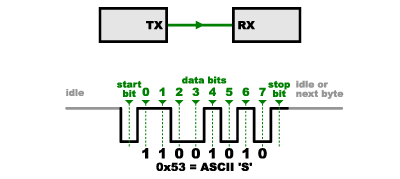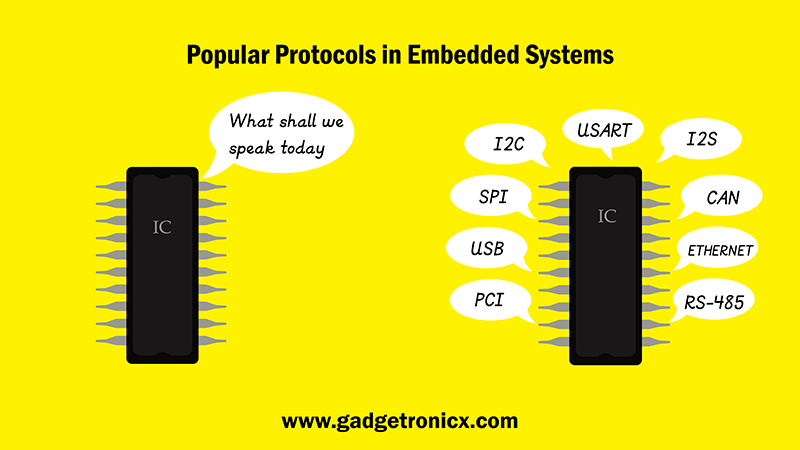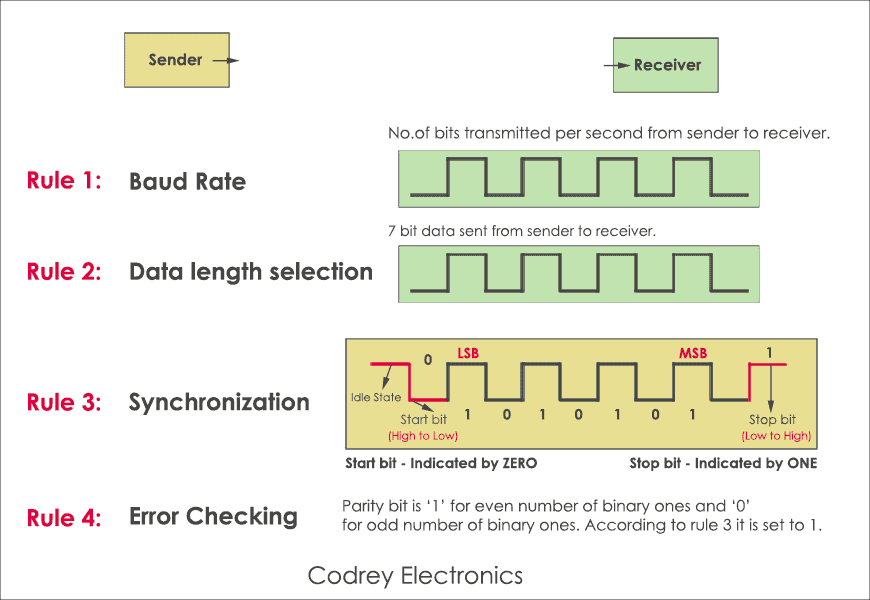

- #Serial communication protocol types how to
- #Serial communication protocol types serial
- #Serial communication protocol types code
Table 1 summarizes what we must know about UART.
#Serial communication protocol types serial
In the serial port context, the set baud rate will serve as the maximum number of bits per second to be transferred. The baud rate is the rate at which information is transferred to a communication channel. Take note that a UART device has a transmit and receive pin dedicated for either transmitting or receiving.įor UART and most serial communications, the baud rate needs to be set the same on both the transmitting and receiving device. The UART lines serve as the communication medium to transmit and receive one data to another. This, in turn, will convert the serial data into parallel for the receiving device. From this, the data will now be transmitted on the transmission line (wire) serially, bit by bit, to the receiving UART. The transmitting UART is connected to a controlling data bus that sends data in a parallel form. The main purpose of a transmitter and receiver line for each device is to transmit and receive serial data intended for serial communication. The two signals of each UART device are named: Two UARTs directly communicate with each other. Asynchronous means there is no clock signal to synchronize the output bits from the transmitting device going to the receiving end.

Proper implementation of frame protocol is commonly disregarded when using the UART module inside the microcontroller.īy definition, UART is a hardware communication protocol that uses asynchronous serial communication with configurable speed. Among the available communication protocols, UART uses only two wires for its transmitting and receiving ends.ĭespite being a widely used method of hardware communication protocol, it is not fully optimized all the time. It is designed in different ways based on system requirements, and these protocols have a specific rule agreed upon between devices to achieve successful communication.Įmbedded systems, microcontrollers, and computers mostly use UART as a form of device-to-device hardware communication protocol. “The single biggest problem in communication is the illusion that it has taken place.”Ĭommunication protocol plays a big role in organizing communication between devices. During product development, this document also aims to share some basic steps when checking on a data sheet for actual usage.Īt the end of the article, the goal is for better understanding and compliance of UART standards to maximize the capabilities and application, particularly when developing new products.
#Serial communication protocol types code
In this article, we will discuss the fundamental principles when using UART, with a focus on packet transmission, standard frame protocol, and customized frame protocols that are value added features for security compliance when implemented, especially during code development. Depending on the application and system requirements, serial communications needs less circuitry and wires, which reduces the cost of implementation. In two-way communication, we use two wires for successful serial data transfer.

In serial communication, data is transferred bit by bit using a single line or wire. When properly configured, UART can work with many different types of serial protocols that involve transmitting and receiving serial data.
#Serial communication protocol types how to
This article shows how to use UART as a hardware communication protocol by following the standard procedure. UART, or universal asynchronous receiver-transmitter, is one of the most used device-to-device communication protocols. UART: A Hardware Communication Protocol Understanding Universal Asynchronous Receiver/Transmitter


 0 kommentar(er)
0 kommentar(er)
